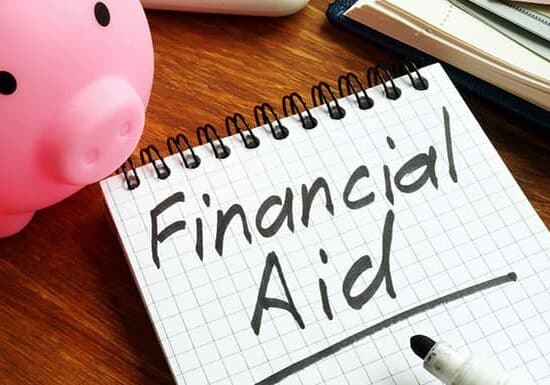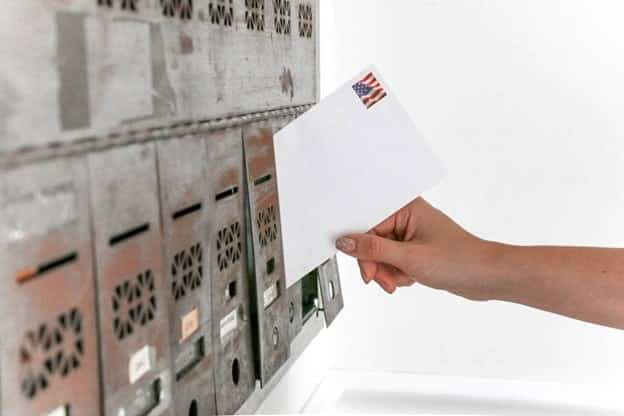How Do I Get My FAFSA Money: A Guide
Updated: June 19, 2024

You’ve completed the first steps to obtaining your college degree — filling out your FAFSA, applying to a college, and getting accepted to a university! Next step: get your financial aid offer and your disbursement so you can pay the tuition. But you may be asking just how do I get my FAFSA money, and how much FAFSA money will I get.
Read on for answers to all your financial aid questions.
How Do I Get My FAFSA Money?
So you have filled out your FAFSA. What next?
First you need to be enrolled in one of the colleges you listed on your FAFSA. Don’t worry — you can go back and change that list of schools before aid disbursement.
The federal government uses your EFC (expected family contribution) that was calculated from information submitted in the FAFSA, and school-submitted data on tuition and living expenses to calculate how much you will receive per term.
Between class registration and tuition due dates, you will receive a notice to confirm your financial aid offer letter. The aid will be automatically applied to your tuition bill. If there is any remaining financial aid left over, you may set up a direct deposit within your school financial aid portal to receive a deposit straight to your bank account after tuition has been paid.
The Financial Aid Offer Letter

Your financial aid offer letter — also called financial aid award — may be sent to you by mail, by email, and will likely also be accessible on your student portal as well. The aid letter will outline what aid you qualify for, including subsidized or unsubsidized federal loans (the interest is either paid by the government during school or not paid), grants, state aid, school resources, and work-study opportunities. Together, all of these make up your financial aid package.
FAFSAs need to be completed each year, and the amount of money you are eligible can change each year. This means that you will also receive a new financial aid award every year. Depending on last year’s income and other circumstances, your aid may change.
Accepting the Financial Aid Offer
You are not required to accept all types of aid offered. On your student portal, you will likely be given the opportunity to select which forms of aid you would like to be applied to your student bill, and which you reject.
You may find that you were only offered one type of aid, or you may find that you were offered several types. Do your research on what the terms are of each loan, and if you have any concerns or questions, reach out to your school’s financial aid office to clarify what is written on your aid letter.
The financial aid offer is given once per year, and you will need to accept it before tuition is due so that the aid can be applied to your student bill.
How You’ll Receive Financial Aid

After you have accepted your financial aid award, the amount will first be applied to your student bill to pay tuition, room and board, and other college expenses listed on the bill. When you start college, make sure to set up your direct deposit on your student portal so that if there is any remaining aid to help cover other student expenses, it will be automatically deposited to your bank account each term.
Federal Grants and Loans
Federal loans and grants, as well as state loans and grants, will be applied first to your student bill to cover tuition and other school costs. Then any leftover will be deposited to your bank account.
Work Study
If you qualify for work study, you still need to find, apply, and interview for a job. The money that you earn at your work study job will be given to you as a normal paycheck, and you are free to use that money to support yourself financially as you see fit.
The difference between work study and a typical student job is that on next year’s FAFSA, you do not have to claim any of the money earned as income.
Scholarships
Each scholarship will have their own way of payment or disbursement. Some may be direct deposit, some may be applied directly to your student bill, and some may come in the form of a mailed check. Stay in touch with your scholarship organization so that you know what to expect, and when.
University of the People (UoPeople) offers a number of scholarships to help students cover the cost of exams and other student-related living expenses.
How long does it take for FAFSA to give you money?
Financial aid is disbursed at the beginning of each term that you are enrolled. If your school is on a quarter system, that will mean something different than if your school is on a semester system. Financial aid should always be applied to your student bill before tuition is due. Check with your school’s financial aid department or your program advisor to find out when exactly direct deposits are released.
Paying for Textbooks Before Financial Aid
Oftentimes, tuition is not due at the beginning of the term, which means financial aid is not disbursed at the beginning of the course.
You may be required to purchase textbooks, course materials, and even pay rent before you receive aid. This can be a challenge for many students. If you find yourself with this problem, try to make sure you have enough aid leftover from the previous term to pay for expenses in your next term.
How to Save Money on Textbooks
Textbooks, lab materials, and online subscriptions can be an expensive part of being a student. As mentioned before, sometimes you won’t have your financial aid before you need to buy textbooks. But there are plenty of ways to save money on textbooks.
Before you spend big bucks, check with your professor or past students if the books are really necessary. If they are, you can buy used, rent, choose an e-book, or share with classmates.
How to Manage Financial Aid Money
Get a bank account if you don’t have one already — this is where your extra aid will go if there is leftover money after tuition and school expenses have been paid to your school. Remember that any money you receive as a loan will have to be paid back eventually.
If you find yourself with more money than you need, you can either request to return it from your financial aid office, make a payment directly to your loan servicer, or put the money aside so you don’t spend it. For the following year, think carefully about how much aid to accept.
Another key tip is to create a student budget. Make a list of necessary expenses you know you will have, and ensure that you keep enough of your aid money to pay for those things. Necessary expenses include textbooks, rent, gas, food, supplies, internet, transportation, etc. Resist the urge to spend the money right when you receive it on things that you may use, but that will leave you unable to pay for the necessities.
Financial Aid Holds: What to Do if There is a Financial Aid Delay
If you log into your student portal’s financial aid section and see that there is a hold on your financial aid, don’t panic!
There are several possible reasons for this, and all of them have solutions.
First, make sure you are taking the correct amount of credits. Federal aid is only eligible for full-time students. If you aren’t taking enough credits, you will either need to forgo aid for the term, or rearrange and add to your schedule.
Another reason there may be a hold is unpaid balance on a previous bill. Go back through your student bills and make sure all balances are paid for you to be able to receive the new aid.
The Bottom Line
So there you have it — you no longer have to ask, “How do I get my FAFSA money?”
You know now that it’s quite a simple process once you’ve set it up. Just accept your offer letter, set up your direct deposit, and you will receive your FAFSA money right into your bank account.

